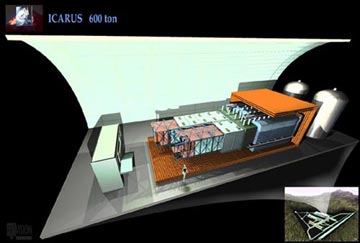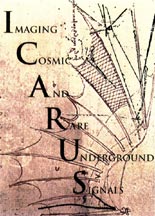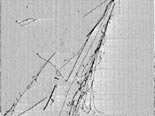
 |
Click here for the official web page
As a first part of the experimental programme proposed by the ICARUS Collaboration, a first detector, "ICARUS T600" , with 600 t of active liquid Argon mass, has been built for an extensive physics programme at Gran Sasso Laboratory. The ICARUS T600 project was fully approved
and financed during the years 1996-97 and the construction
started immediately after. The detector has been assembled
by the end of 2000. taken during the construction in Pavia
(INFN site) Following this plan, the test run has been performed in Pavia,near
Milan (Italy): the start-up operations begun on April 23rd,
2001 and, after smooth vacuum pumping and cool-down procedures,
one of the two half-modules (300t of LAr) of the T600 has been
filled with ultra-purified liquid Argon (LAr). The inner detector
(Time Projection Chambers) was instrumented with the read-out
electronics and the HV was rised-up to nominal voltage. A large data sample of cosmic ray events has been collected with various trigger logic's, including the external (vertical and horizontal) trigger systems, the internal PMT trigger system and combinations of the two. The last three weeks of the run (up untill beginning of August 2001) were dedicated to smooth data acquisition, aiming to collect cosmic events with unprecedented richness of detail . On August 10th, the LAr has been evacuated and the run was ended after about 100 days of continuous, fully successful operation. The results of this test gives the proof that the liquid Argon technology we have been developing for many years, has reached maturity. Presently, the inner detector of the second half-module is
being completed. The ICARUS T600 detector
will be transported to the Gran
Sasso Laboratory and deployed in the underground
experimental Hall-B by the end-2002/beginning-2003 to start
data taking. The experimental programme, with ICARUS
T600, is a self-contained programme,
with significant physics potentialities, combined with
aspects of technological development in view of the operability
of liquid Argon "bubble chamber" detectors with much
larger mass. |


